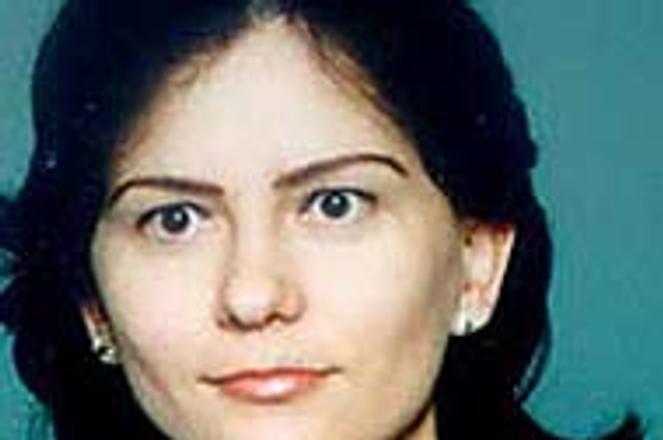Jana Kolláriková
While much of the rest of Slovakia's economic sector slid into its usual summer torpor of holidays and quick breaks, dealers on financial and money markets had little time to rest this past month. The recovering health of President Rudolf Schuster, political in-fighting within one coalition party and a membership invitation from the OECD all had an impact on trading.
After a turbulent June on the Slovak foreign currency market, the crown entered the new month in a favourable, calm atmosphere buoyed by positive news from the Innsbruck clinic about President Schuster's health.
The pro-crown mood of some domestic, but mainly foreign, banks showed on the first day of July, when they squeezed the value of the crown with their buying from an opening level of 42.550/650 SKK/EUR to 42.370/470 SKK/EUR. A further factor was the sale of Slovak Telecom to Deutsche Telekom for 1 billion euros. Increasing confidence in the crown brought another strengthening to a limit of 42.250/350 SKK/EUR, but then domestic importers started to buy foreign currency and corrected the rate to 42.400/500 SKK/EUR.
But stable crown trading came to an abrupt end when members of the ruling coalition Democratic Left Party (SDĽ) began an internal political battle. A confrontation between SDĽ leader Jozef Migaš and Finance Minister Brigita Schmögnerová pushed the minister to the brink of resignation. The market reacted with a massive selling of crowns, and the fall stopped only at 42.900-43.000 SKK/EUR. The minister then withdrew her threat to resign, and the rate strengthened to 42.450/550 SKK/EUR.
The crown was traded in a thin margin of 42.400-42.600 SKK/EUR in the expectation of Slovakia's membership of the Organisation for Economic Cooperation and Development (OECD). But when the first day of the OECD commission meeting did not bring a result, foreign banks immediately interpreted this as a negative signal, and the exchange rate dropped to 42.750/850 SKK/EUR. However, after an invitation to join the OECD came on the next day, the crown strengthened 50 pips to 42.250/350 SKK/EUR. July closed with the crown at 42.350/450 SKK/EUR. Next month's trading is expected to span the 42.000-42.600 SKK/EUR range.
Liquidity excess and rising investor demand
The lowering of the minimum required reserves (MRR) rate from its previous 8% to 6.5% took effect in July and resulted in a liquidity surplus. The banking sector immediately regained the funds which had been languishing in central bank accounts at an interest rate of 1.5%, allowing them to be used on the interbank market at a much higher interest rate.
Trading at the beginning of July was thus marked by a liquidity surplus that resulted in the fall of overnight interest rates to the central bank's sterilisation repo rate - currently at 7%. Moreover, funds from maturing T-bonds with a nominal value of 1.53 billion crowns entered the market.
The excess liquidity was mopped up through the central bank's regular two-week sterilisation repo tenders (SRT) and in auctions of T-bills, T-bonds and central bank bonds. The central bank pulled 15.5 billion and 10.05 billion crowns from the market with two SRTs bearing an average interest rate of 8.29%.
In an auction of 273 day T-bills, the Finance Ministry accepted a pre-set volume of 1.3 billion crowns at an across-the-board yield of 7.5%. Investor demand was much higher, reaching 5.76 billion crowns. An auction of 364 day T-bills produced similar results - the Finance Ministry accepted one billion crowns at a 7.35% yield, implying that a single investor had scooped the entire issue. Total demand reached 4.377 billion crowns.
In a sale of 84-day central bank bills, the NBS accepted bids of 6 billion crowns with a yield of 8.3% and a total demand of 7.15 billion crowns. An auction of five year T-bonds with a pre-set maximum volume of seven billion crowns and an 8% coupon was also oversubscribed by 1.688 billion crowns.
In response to the enduring liquidity excess, banks quoted 1 day deposits at 7-7.4%, 1 and 2 week deposits at 7.8-8.2%, and 1-month deposits at 7.6-8.0%. Deposits with a longer maturity were quoted a little under 8%.
But in the second half of the month, a further 6.58 billion crowns from maturing T-bills and 2.63 billion from NBS bills entered the market, forcing the central bank to drain 17.4 billion and 10.95 billion crowns from the market in two week repo tenders with an average revenue of 8.28% and 8.32% respectively.
On July 18 the central bank board met, and against general expectations of a drop left key interest rates unchanged (7% for the one day sterilisation rate, 10% for the one day financial repo rate and 8.5% for the two week repo). The NBS said it wanted to ensure that inflationary pressures were easing before lowering rates.
Jana Kolláriková is a dealer at Ľudová banka.
Author: Jana Koláriková


